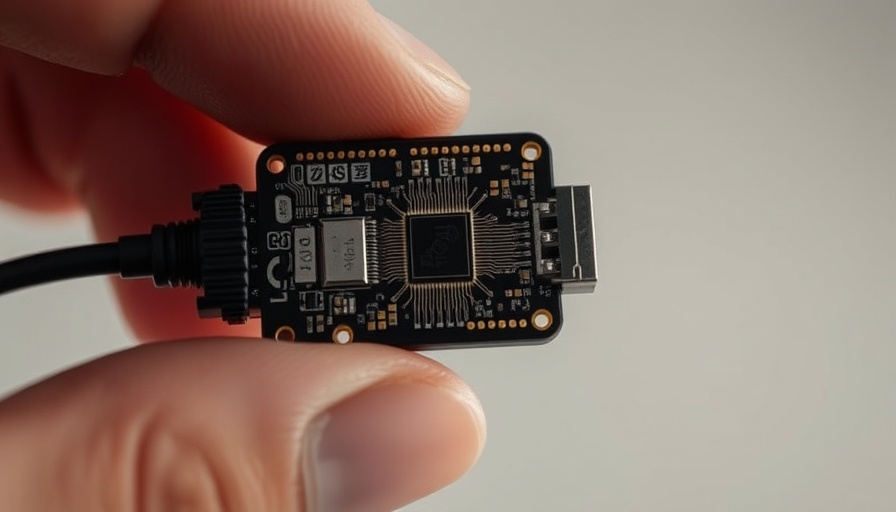
Revolutionizing Wound Care: The Role of Real-time Sensors
In the ever-evolving field of healthcare, the need for precise and effective wound management is critical. Traditional methods of wound assessment have heavily relied on the subjective visual evaluations of medical professionals, introducing significant variations in diagnosis and care. However, recent advancements in technology are challenging these conventional practices, making way for more reliable and quantifiable solutions, such as real-time sensors that measure biomarkers crucial for healing.
The Significance of Nitric Oxide in Healing
Nitric oxide (NO) plays a pivotal role in the body’s immune response and healing processes. This gas is produced by immune cells during inflammation, making it vital for initiating recovery. However, its fleeting nature poses a challenge for measurement. Scientific literature notes that NO has a short lifespan, lasting mere seconds before it dissipates. Consequently, efficient detection methods capable of delivering real-time readings are imperative. The MERLIN sensor, a new and innovative technology, addresses this issue by providing localized, rapid detection of NO levels across wounds.
Understanding the MERLIN Sensor Array
The MERLIN sensor array, developed by the Cohen-Karni research group, employs a multiplexed, electrochemical system designed to track inflammation and measure NO concentration with remarkable accuracy. Its design resembles that of a glucose monitor, operating to track biomarkers throughout the wound healing process. Recent studies conducted on rat skin demonstrate its effectiveness; NO levels rose during inflammation and mirrored findings from previous studies, indicating consistent performance.
A Step Towards Human Trials: What Lies Ahead
Looking ahead, the advantages of the MERLIN sensor extend beyond animal trials as it prepares to enter human clinical trials at the University of Pittsburgh Medical Center (UPMC). This transition is crucial, as it promises to bring real-time assessment tools directly into clinical settings, where they can dramatically enhance the care provided to patients with wounds.
Potential Benefits for Healthcare Providers and Patients
For healthcare providers, the ability to accurately measure NO levels allows for a more precise assessment of a wound's state and its response to treatment. This innovative monitoring device can help clinicians formulate better therapeutic strategies and make informed decisions, ultimately leading to improved patient outcomes. Moreover, for patients, this real-time data collection could mean more focused treatments tailored to the specific requirements of their healing process.
Integrating Multi-Disciplinary Approaches for Enhanced Outcomes
The MERLIN sensor's development is a testament to the collaborative efforts of researchers from various institutions, including Carnegie Mellon University and the University of Pittsburgh. Their focus on the sensor's flexibility, size, and operational speed aims to create an unobtrusive and efficient healthcare tool that can seamlessly integrate into existing medical practices.
Future Trends: A Comprehensive Picture of Wound Healing
As technology continues to advance, the field of wound care is likely to evolve further. The integration of sensors that monitor additional biomarkers, beyond nitric oxide, could provide a more comprehensive picture of the healing process. Furthermore, the potential to incorporate telemedicine into this monitoring system could allow clinicians to evaluate conditions remotely, reducing the necessity for frequent hospital visits.
Actionable Insights for Clinicians and Patients
The introduction of real-time sensors like the MERLIN represents an exciting opportunity for both clinicians and patients. By embracing these technologies, healthcare providers can shift from subjective assessments to data-driven decisions. Patients, on the other hand, can find reassurance in knowing their healing process is being monitored meticulously.
Conclusion: The Turning Point in Wound Care
As we stand at this crossroads of technology and healthcare, advancements like the MERLIN sensor point toward a future where wound care is not only more effective but also more human-centered. It invites healthcare professionals and patients alike to engage with a system that emphasizes evidence-based treatment and personalized care.
 Add Row
Add Row  Add
Add 




 Add Row
Add Row  Add
Add 
Write A Comment